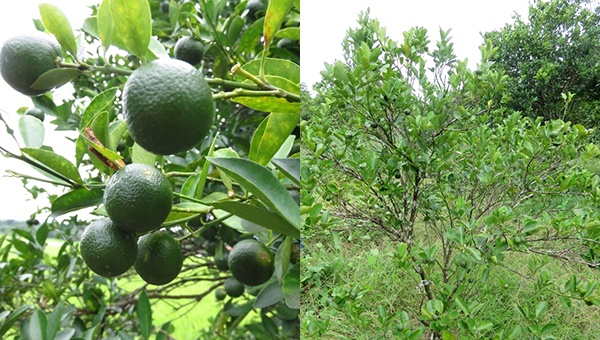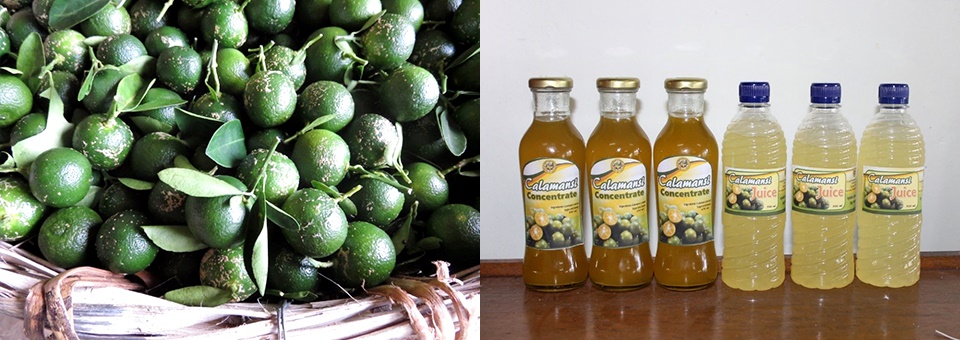 Calamansi Farms in Victoria, Oriental MindoroRecognizing the potentials of calamansi and the need to revitalize the industry, the Southeast Asian Regional Center for Graduate Study and Research in Agriculture (SEARCA) partners with the University of the Philippines Los Baños, the Mindoro State College of Agriculture and Technology (MinSCAT), Tokyo NODAI, and the Local Government Units (LGUs) of Oriental Mindoro to address gaps along the calamansi value chain through technology adoption, utilization or commercialization, and marketing. Through this partnership, the newly approved and funded project of the Department of Agriculture – Bureau of Agricultural Research (DA-BAR), titled Upgrading the Calamansi Value Chain towards Improving the Calamansi Industry of Oriental Mindoro will be implemented for two years. The project aims to address the technical and market constraints confronting the calamansi industry in Victoria, Oriental Mindoro along the value chain. Specifically, it sets out to (1) improve calamansi production and fruit quality by utilizing proven technologies and practices in integrated pest management, fertilization, off-season fruiting, and post-harvest handling practices; (2) support the commercialization of calamansi-based products through value chain analysis of processed products, market study, and product enhancement; (3) strengthen capacities of calamansi stakeholders on the improved production and post-harvest handling practices, calamansi processing, and entrepreneurship; and (4) promote faculty and student exchange for R&D and technology promotion/transfer undertakings.
Calamansi Farms in Victoria, Oriental MindoroRecognizing the potentials of calamansi and the need to revitalize the industry, the Southeast Asian Regional Center for Graduate Study and Research in Agriculture (SEARCA) partners with the University of the Philippines Los Baños, the Mindoro State College of Agriculture and Technology (MinSCAT), Tokyo NODAI, and the Local Government Units (LGUs) of Oriental Mindoro to address gaps along the calamansi value chain through technology adoption, utilization or commercialization, and marketing. Through this partnership, the newly approved and funded project of the Department of Agriculture – Bureau of Agricultural Research (DA-BAR), titled Upgrading the Calamansi Value Chain towards Improving the Calamansi Industry of Oriental Mindoro will be implemented for two years. The project aims to address the technical and market constraints confronting the calamansi industry in Victoria, Oriental Mindoro along the value chain. Specifically, it sets out to (1) improve calamansi production and fruit quality by utilizing proven technologies and practices in integrated pest management, fertilization, off-season fruiting, and post-harvest handling practices; (2) support the commercialization of calamansi-based products through value chain analysis of processed products, market study, and product enhancement; (3) strengthen capacities of calamansi stakeholders on the improved production and post-harvest handling practices, calamansi processing, and entrepreneurship; and (4) promote faculty and student exchange for R&D and technology promotion/transfer undertakings.
The Upgrading Calamansi Value Chain Project includes four components.
- Component 1: Expanded Calamansi Value Chain Analysis and Market Study;
- Component 2: Improving Calamansi Production, Postharvest Handling, and Processing through promotion and dissemination of integrated pest management (IPM) strategies, improving post-harvest handling practices, and pilot testing of Hot Water Treatment (HWT) and Modified Atmosphere Packaging (MAP), and improving existing production management for increased yield and off-season fruiting;
- Component 3: Enhancing Calamansi Products and Enterprise Development in Oriental Mindoro; and
- Component 4: Capacity Building and Faculty/Researchers Exchange.
This project takes off from the gains of the SEARCA program Piloting and Upscaling Effective Models of Inclusive and Sustainable Agricultural and Rural Development (ISARD) in its pilot site in Victoria, Oriental Mindoro. (Bessie M. Burgos)
